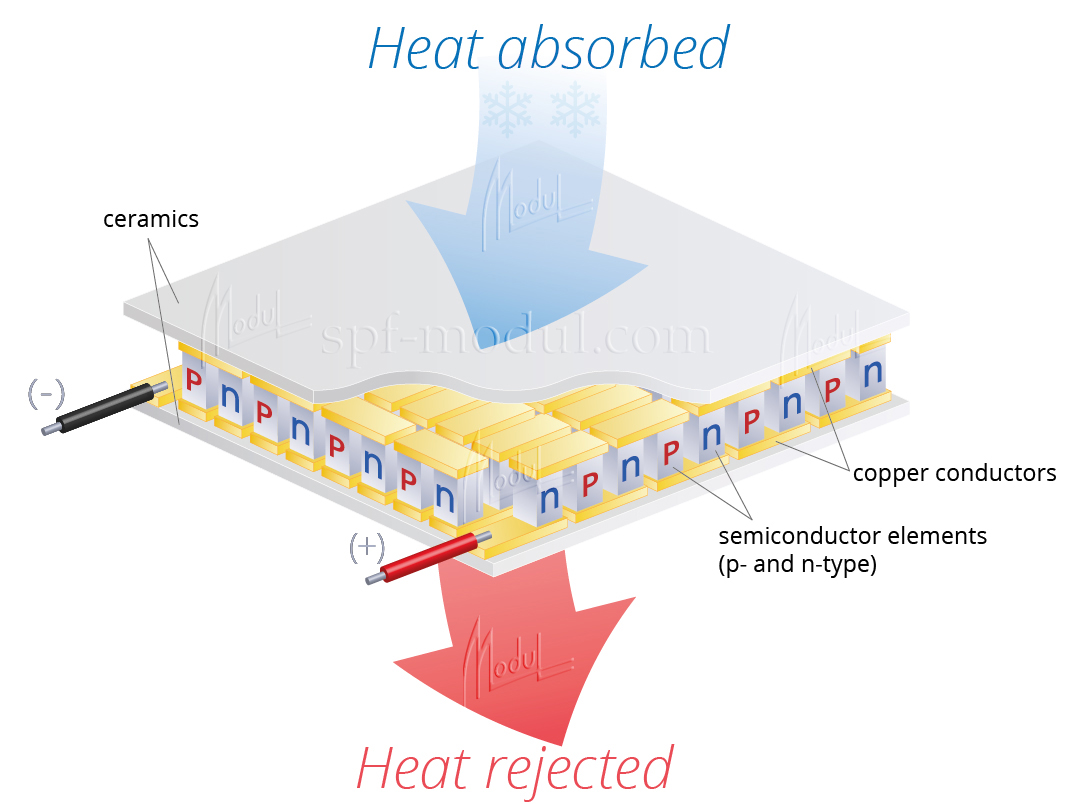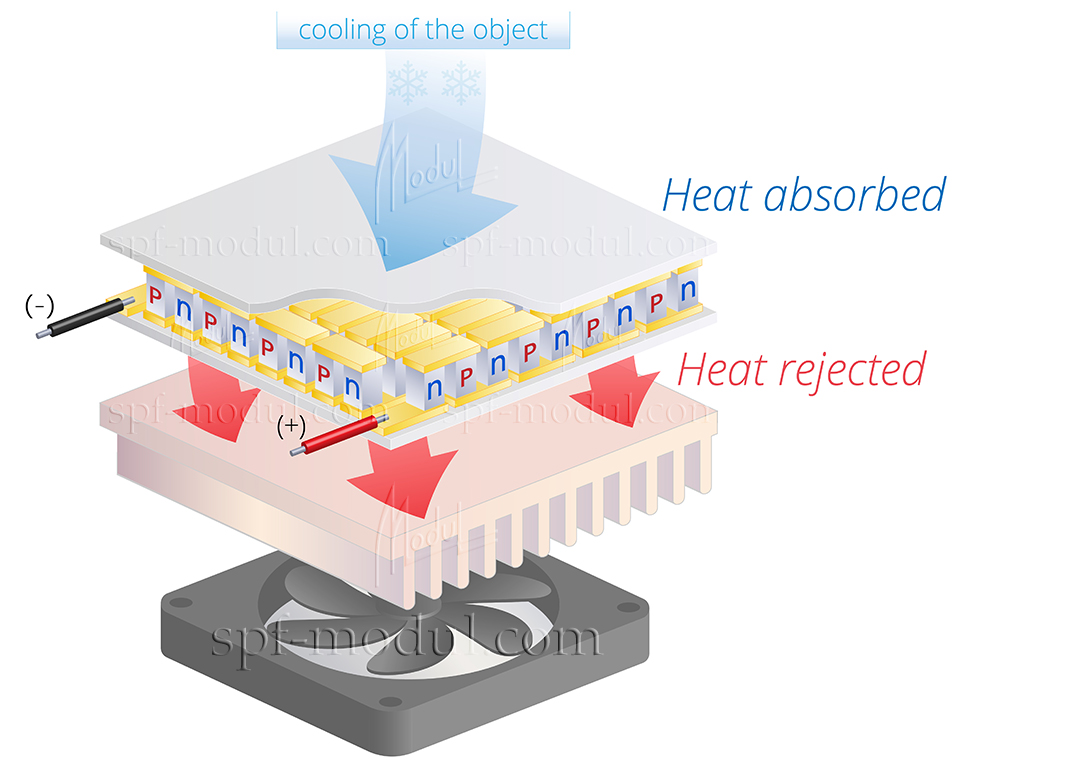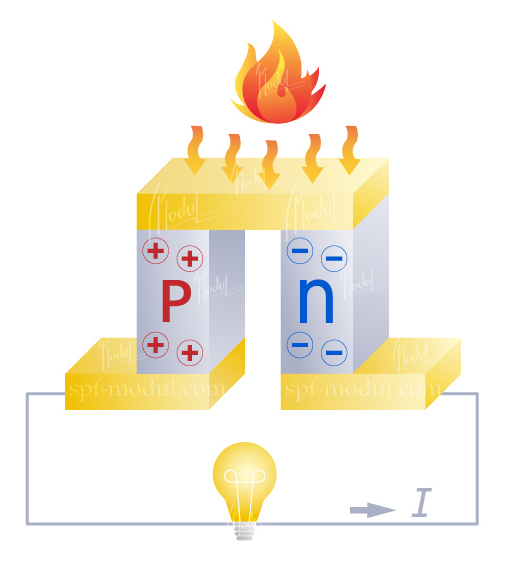The design and working principle of the Peltier thermoelectric module (TEM). How does a thermoelectric module work?

The operation principle of the thermoelectric module is based on the Peltier effect - the occurrence of a temperature difference at the contact of two dissimilar semiconductors (p- and n-type) when an electric current flows through them.

When DC passing through a module, a temperature difference is formed between its sides: one side is cooled, and the other is heated.
When using a thermoelectric Peltier module, it is necessary to ensure efficient heat removal from its hot side. If you keep the temperature of the hot side of the module at the level of the ambient temperature, then on the cold side you can get a temperature that will be tens of degrees lower. The degree of cooling depends on the amount of current passing through the module.

The thermoelectric module can also work with the opposite effect - with the ability to generate electricity. The principle of operation of the thermoelectric generator module (TEG) is based on the Seebeck effect - the occurrence of EMF at the ends of two interconnected dissimilar semiconductors, the junctions of which are at different temperatures. Thus, an electric current arises in a closed circuit and electric power is generated to power external devices. Read more About thermoelectric generators, see Thermoelectric generator modules


